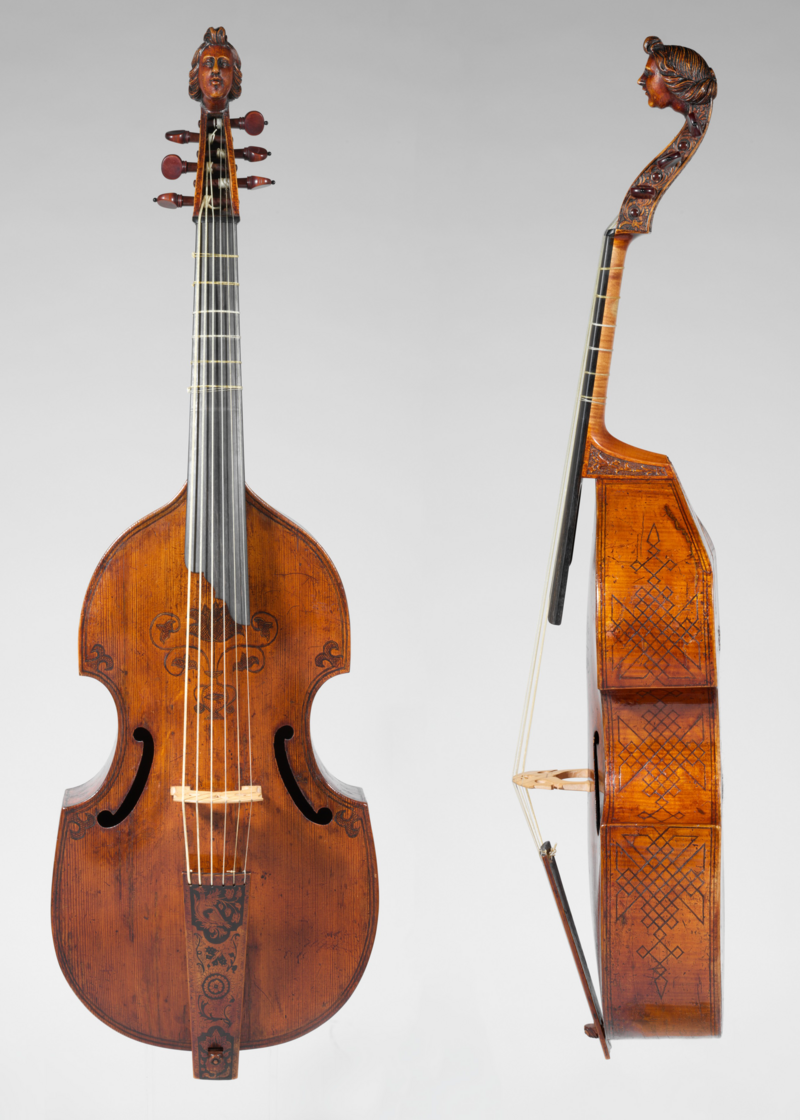
Virtual Program

The “Stile Moderno”
The start of the 17th century marked a pivotal turn from what we think of as Renaissance music into Baroque music. Composers such as Giulio Caccini and Claudio Monteverdi sought greater emotional immediacy in their compositions. This stile moderno (modern style), or seconda practica (second practice), emphasized declamation and harmonic motion. This contrasted with the prima practica (first practice) of an earlier generation of composers, such as Giovanni Pierluigi da Palestrina, which prioritized strict counterpoint and treatment of dissonances.
The early 1600s also saw the codification of basso continuo, the practice in which a bass line was marked with numeric figures to indicate the chords meant to be played. This gave added discretion to performers to find the right style of accompaniment to enhance the melodic line. For the next century and a half, basso continuo essentially underpinned the music of what we now call the Baroque era.
Instruments of the Evening:
A Closer Look
Tonight’s program features instruments both unique and familiar—learn more about them here!
The first recognizable violins were made in the early 16th century in northern Italy. Compared to modern violins, typical violins from the 17th and 18th centuries (and their replicas) have shorter necks and lighter bass bars (internal bracing). The instruments were strung with gut, and lacked chin and shoulder rests. In addition, earlier bows were convex, as the concave bow was not developed until the late 18th century.
Combined with a “historically informed approach” to playing, Baroque violins generally have a “sweeter” and more intimate sound quality, with the bows suggesting a more articulated, almost speaking, manner of playing.
“Baroque” Violin
Viola da gamba
The viola da gamba, or viol, is a bowed and fretted string instrument that is played “on the leg,” or da gamba, as opposed to “on the shoulder” (da braccio) like the violin and its relatives. First appearing in Spain and Italy in the 15th century, the viol evolved from the Arabic rebab and the medieval vielle.
The bass viol used in tonight’s program often came in six or seven strings (the latter especially for French music). Similar to guitars, it is a fretted instrument tuned in fourths with a third in the middle. Unlike violin family instruments (violin, viola, cello), viols have flat backs and sometimes do not have sound posts, resulting in a lighter, more “buzzy” sound quality. In addition, viol bows are generally held underhanded.
Theorbo
The theorbo, a large instrument from the lute family, was often used in the Baroque era at various times and places as an accompanying instrument (playing basso continuo) or as a solo instrument.
Its distinctive extended neck and second pegbox allows for unfretted bass strings, which add to the instrument’s range, as well as a large and more resonant sound.
Florentine Harpsichord
In tonight's performance, we will feature a five-octave Florentine instrument crafted by John Phillips, Berkeley’s local harpischord builder extraordinaire. This exquisite instrument is built in the style of the pupils and followers of Bartolomeo Cristofori (the inventor of the piano) from the 18th century.
For those interested in John Phillips's craftsmanship and to see more of his instruments, please visit his website at jph.us for further details and examples of his exquisite creations.
Klop Continuo Organ
A modern invention, continuo organs are compact, portable instruments with electronic wind chests that mimic simple organs from the Baroque period. The quality and volume of their sound allow for historically-informed performances in spaces that lack organs, or require different pitch levels.
Tonight’s continuo organ was made by Henk and Niels Klop and was designed by Gerrit Klop, and it features entirely wooden pipework inspired by Esaias Compenius’s 1610 organ, now housed in Denmark. The organ is finished in cherry wood with ornamental grill panels.

Ensemble Affect • March 28–30
Home Away from Home
Discover "Home Away from Home," where Baroque composers blend cultures and reflect modern immigrant stories. Experience timeless music that transcends borders!
Join SFEMS for our special summer season featuring two captivating performances!
Experience Emperor of the Moon (June 6–8), blending music, dance, and storytelling; as well as Secret Byrd (July 17–18) at Grace Cathedral in an immersive staging by Concert Theatre Works.
Don’t miss these unforgettable events!












